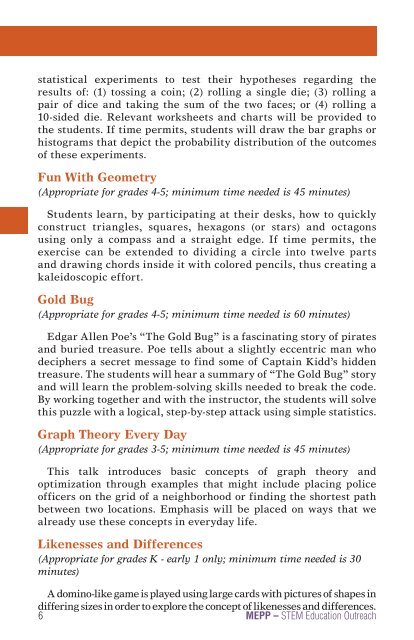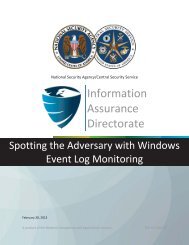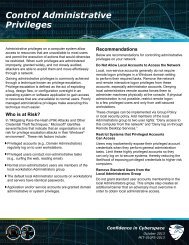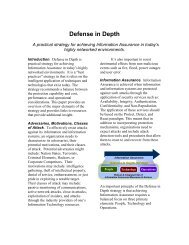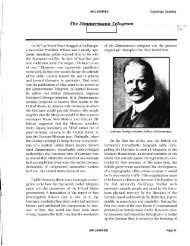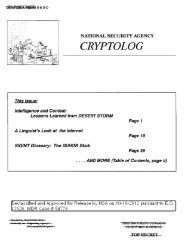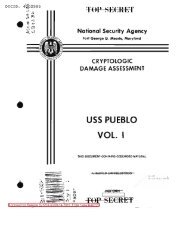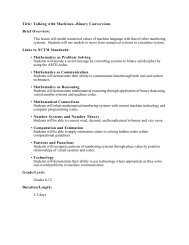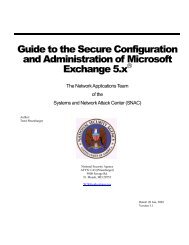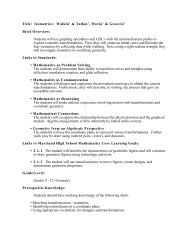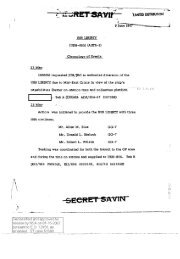Speakers Bureau Speakers Bureau - National Security Agency
Speakers Bureau Speakers Bureau - National Security Agency
Speakers Bureau Speakers Bureau - National Security Agency
Create successful ePaper yourself
Turn your PDF publications into a flip-book with our unique Google optimized e-Paper software.
statistical experiments to test their hypotheses regarding the<br />
results of: (1) tossing a coin; (2) rolling a single die; (3) rolling a<br />
pair of dice and taking the sum of the two faces; or (4) rolling a<br />
10-sided die. Relevant worksheets and charts will be provided to<br />
the students. If time permits, students will draw the bar graphs or<br />
histograms that depict the probability distribution of the outcomes<br />
of these experiments.<br />
Fun With Geometry<br />
(Appropriate for grades 4-5; minimum time needed is 45 minutes)<br />
Students learn, by participating at their desks, how to quickly<br />
construct triangles, squares, hexagons (or stars) and octagons<br />
using only a compass and a straight edge. If time permits, the<br />
exercise can be extended to dividing a circle into twelve parts<br />
and drawing chords inside it with colored pencils, thus creating a<br />
kaleidoscopic effort.<br />
Gold Bug<br />
(Appropriate for grades 4-5; minimum time needed is 60 minutes)<br />
Edgar Allen Poe’s “The Gold Bug” is a fascinating story of pirates<br />
and buried treasure. Poe tells about a slightly eccentric man who<br />
deciphers a secret message to find some of Captain Kidd’s hidden<br />
treasure. The students will hear a summary of “The Gold Bug” story<br />
and will learn the problem-solving skills needed to break the code.<br />
By working together and with the instructor, the students will solve<br />
this puzzle with a logical, step-by-step attack using simple statistics.<br />
Graph Theory Every Day<br />
(Appropriate for grades 3-5; minimum time needed is 45 minutes)<br />
This talk introduces basic concepts of graph theory and<br />
optimization through examples that might include placing police<br />
officers on the grid of a neighborhood or finding the shortest path<br />
between two locations. Emphasis will be placed on ways that we<br />
already use these concepts in everyday life.<br />
Likenesses and Differences<br />
(Appropriate for grades K - early 1 only; minimum time needed is 30<br />
minutes)<br />
A domino-like game is played using large cards with pictures of shapes in<br />
differing sizes in order to explore the concept of likenesses and differences.<br />
6 MEPP – STEM Education Outreach


